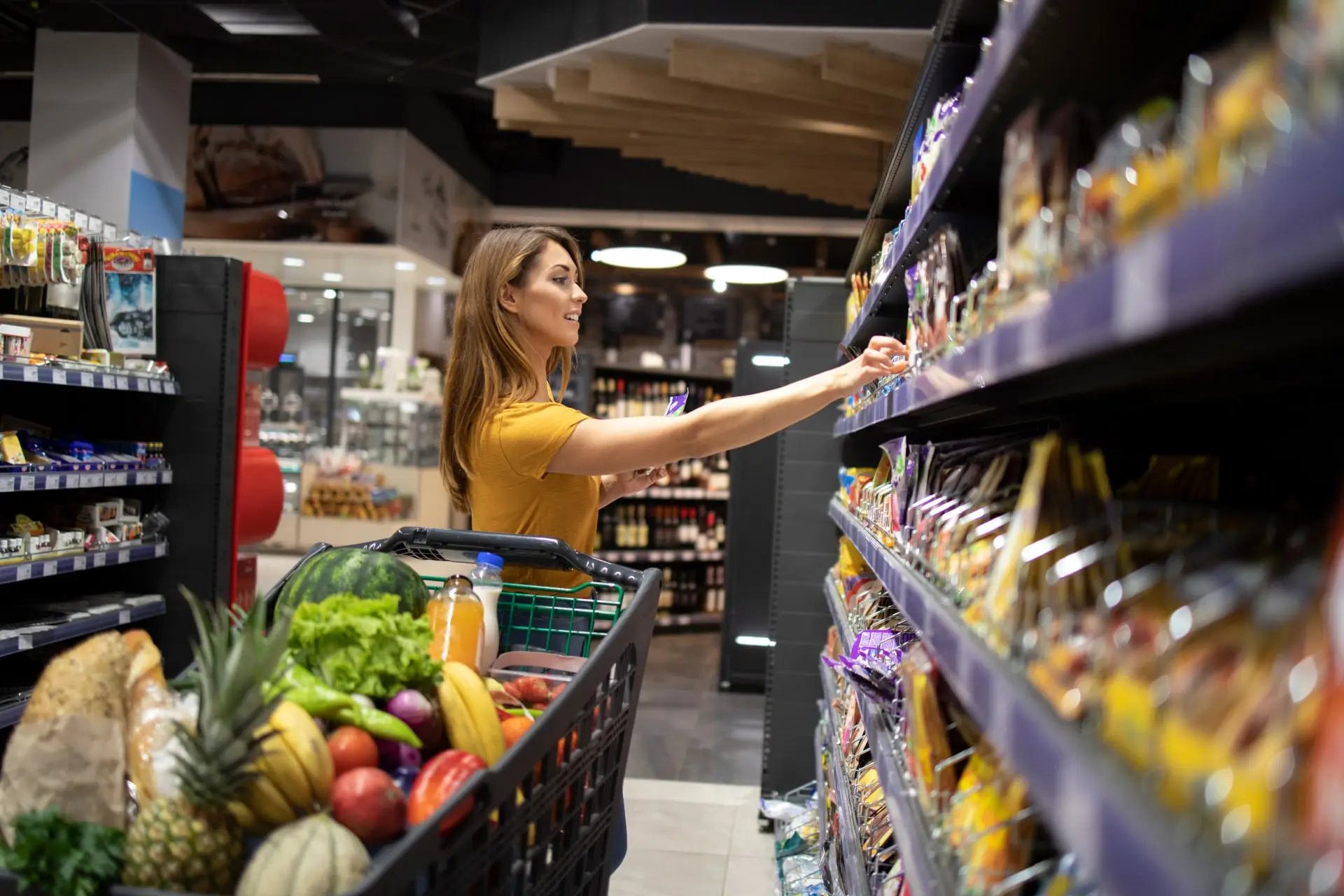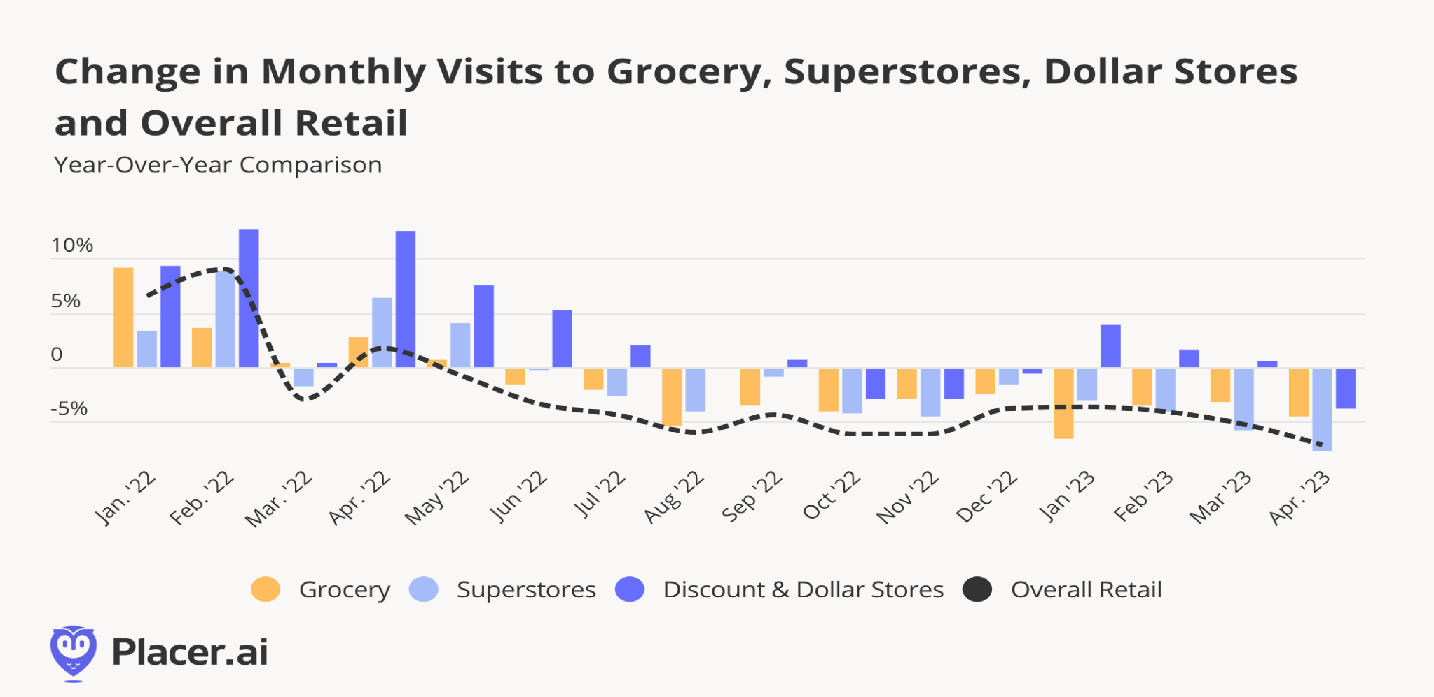Is Shopper Behavior Changing? Exploring the Shift in Grocery and Convenience Store Visits

Try TrafficZoom’s AADT metrics today with a free trial
Get instant access nowIntroduction
In today's rapidly evolving retail landscape, understanding consumer behavior and adapting to changing trends is crucial for businesses to thrive. Recent reports and data analysis from various sources shed light on intriguing shifts in shopping patterns at grocery chains and convenience stores. This article delves into the findings presented by a number of well-known companies sharing insights from mobile data, such as loyalty applications, and compares these with industry data from National Association of Convenience Stores (NACS), and with study we conducted at Ticon since we position ourselves as location intelligence experts. By examining these insights, we can gain a deeper understanding of how shoppers are approaching their visits, the factors influencing their choices, and the implications for retailers.
A Closer Look at Grocery Chains
In ever-increasing business of mobile data resellers, some companies indicate a trend they observed across several grocery chains: median visit durations have increased, while average visit frequency has dropped (Figure 1 below). This suggests that consumers are adopting a more cautious approach to their grocery runs. One possible explanation is the desire to save on gas costs by consolidating shopping trips. In the face of a newly tightened budget, shoppers are becoming more intentional and deliberate about their purchases.

This shift in behavior underscores the importance of efficient store layouts, well-organized product placement, and effective marketing strategies. Retailers should focus on maximizing the value and convenience of each visit to cater to these increasingly discerning consumers. Perhaps these, clearly necessary and ever-recommended measures will allow the most diligent practitioners to reduce the consequences of reducing number of customers.
Generally, almost 5% reduction in customer visits in just one year may seriously affect many businesses. Moreover, if this is a trend, then many, especially the investors, may draw from this information the conclusions that are extremely unfavorable for the industry. As a supplier of services for the retail industry, it is also important for us to check how objective this information is, and whether the trend of decreasing number of visits really takes place. This check is also necessary because the above diagram and the conclusions based on it came from processing of the mobile data provided by users of loyalty apps. One has to consider that, firstly, such users make up only a small percentage of all visitors (usually less than 15%), and, secondly, it is still not a randomly selected pool of customers, hence the results may be biased.
The Rise of Foodservice in Convenience Stores
Thus, it is not surprising that other providers that base their analysis, among other sources, on direct observations, do not confirm the above referenced reduction in the number of store visits. For example, NACS and other retail industry publications report indicate in their observations an 8% increase in customer spending on foodservice items at convenience stores over a three-month period. Additionally, the number of trips to c-stores for food and drinks rose by 2% year over year during the same period.
This growth can be attributed to c-store operators who have recognized the potential of foodservice options and have made efforts to enhance their offerings. By focusing on fresh and healthy choices, convenience stores are capitalizing on the evolving preferences of their customers. This strategic shift not only appeals to those seeking convenient meal options but also opens up new revenue streams for c-store operators.
Unveiling the Bigger Picture with Location Intelligence
We found it interesting that there are conflicting opinions on such a burning issue. Ticon’s proprietary algorithm evaluates true traffic volumes, and the number of visitors is proportional to this indicator, which is also known, in particular, from the articles of Robert E. Bainbridge discussing factors affecting the c-store valuation. It should be noted that our own research also confirms a proportional, albeit not linear, increase in the number of visits with an increase in road traffic intensity.
Therefore, we undertook a special study of the traffic flow dynamics in the vicinity of various, randomly selected retail entities.
We conducted research on 50 locations, 25 of which contained retail stores and C-stores, and 25 contained C-stores only. The trend turned out to be almost the same, so we did not separate these groups in the diagram. The overall trend clearly indicates the increase over the time of observation (Figure 1), which is corroborating the conclusions made by researches possessing the insider knowledge of the convenience store industry, like NACS. In light of these facts, the analytical extrapolations by mobile data resellers look less indicative of the real picture.

Figure 2 also shows a large volatility of traffic trends from one location to another.
Therefore, it is crucial to approach each store location individually for precise answers, as there are multiple factors, subjective as well as objective, that affect the results for different stores. As the potential loss caused by absence of this important information, is incomparably higher than the cost of getting the comprehensive report, the prudent course of action should be obtaining the traffic report for your location(s) on yearly basis.
Ticon, a leader in Location Intelligence, offers valuable insights into the broader retail landscape. Ticon's retail site analysis report provides comprehensive data that can assist retailers in understanding the specific dynamics influencing their business, from trade area analysis to site selection to operations.
By leveraging location intelligence, retailers can identify emerging market trends, consumer preferences, and potential untapped opportunities. With fresh traffic data from Ticon, retail operators can be warned in a timely manner not only about changes, but also about trends, which means choosing the right development strategy and make informed decisions regarding store operations, product assortment, and customer engagement strategies.
Conclusion
The changing landscape of consumer behavior is reshaping the retail industry, and grocery chains and convenience stores are no exception. The observations made by location intelligence experts offer valuable insights into these shifting trends.
By embracing data-driven insights and exploring comprehensive traffic data, retailers can navigate these shifts and position themselves for success in the dynamic retail industry of tomorrow.














